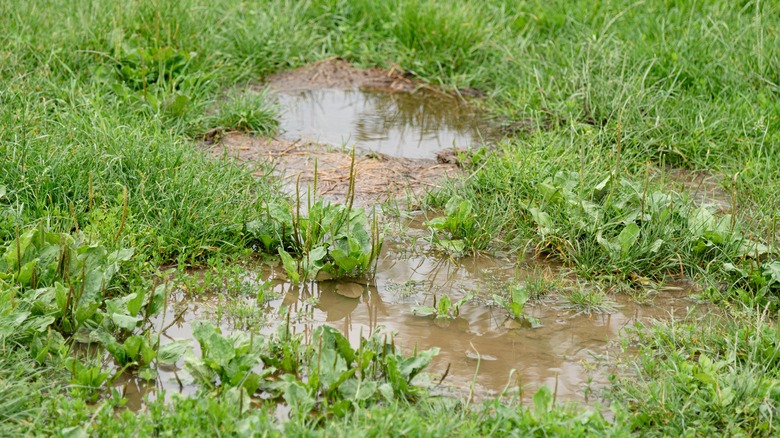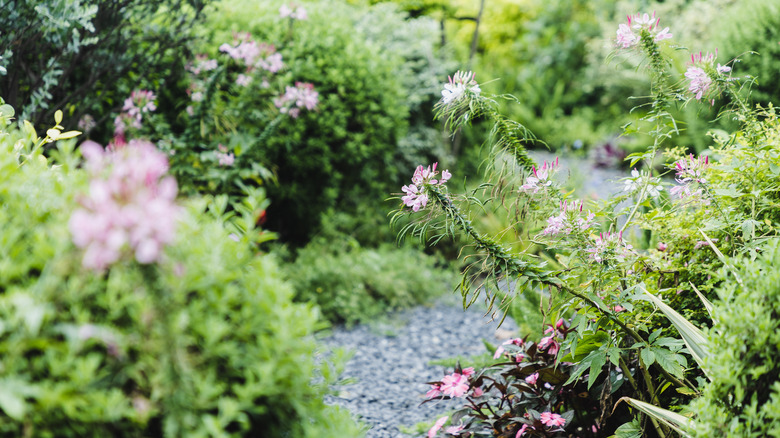Conquer Excess Stormwater In Your Yard With A Solution You Can DIY
Having a yard with poor drainage can be endlessly annoying. Not only can the excess water drown your grass and other plants, but puddles of standing water also attract mosquitoes. If you've confirmed that there isn't a problem with your septic field or drain tiles, you may have assumed there was nothing else you could do to fix the problem. Luckily, that's not the case. You can actually have a relatively dry yard and drain your wet flower beds with just a bit of work. Consider creating a swale in your backyard. Not only will it decrease the amount of standing water in your lawn, but it will also help to keep your plants hydrated after the storms have stopped.
Swales are essentially paths created for water to flow through slowly, allowing it to be absorbed by the soil instead of turning into run-off or filling your yard with muddy patches. While they aren't difficult to create, you do have to spend some time examining the low spots in your yard and the slope of your landscape to make sure your swale is as effective as possible.
A grass swale, however, is built with a gentle slope to prevent erosion. The slope has to be at least 1% to direct water, but it shouldn't be any steeper than 4%. It is mainly filled with grass, though you can still plant perennials or shrubs as well. This may blend into your yard better than the gravel-filled swale. Just make sure you build it far enough away from your septic fields.
Tips for creating your own swale
At its most basic, creating your swale is as simple as digging a shallow ditch in a gently sloping path through your yard. However, do be aware of safety measures that protect groundwater quality and avoid your septic field. The swale should carry water away from your home and driveway while weaving through gardens so that the water can be slowly absorbed by the soil. While some swales are lined with just rocks along their bottom and sides, many others are planted with grasses or native plants.
Using plants that need a lot of water may seem like a good option for growing in swales, but don't forget that there will likely also be times when your swale is entirely dry, depending on your average rainfall. If you want to plant flowers or other native plants in there, you need to be careful to pick species that can handle both wet and dry conditions.
It is also important to pay attention to whether your swale is primarily in a sunny or shady location when deciding on appropriate plants. Some good options to consider could include swamp milkweed, native asters, and ferns. Looking at what species grow well in flood plains or rain gardens in your region is a good way to find additional ideas for plants to grow in and along your swale.

